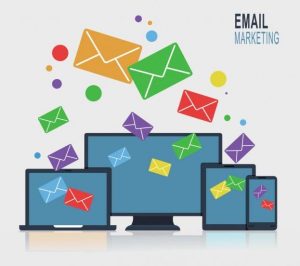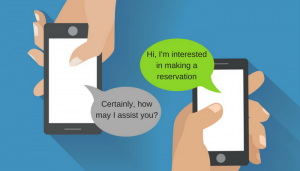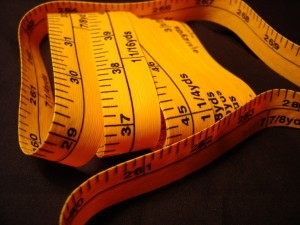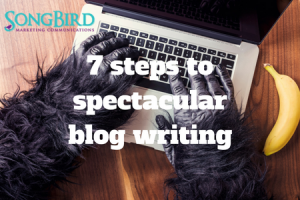What’s the best way to attract clients?
To endlessly send cold emails until you get flagged as spam?
Or to handpick 10 clients you REALLY want to write for…
And then share ideas on how they can improve their conversions and moolah?
My advice would be the latter.
Sure, this strategy always has the risk of backfiring. There will be lots of times when copy doesn’t follow ‘the rules’ yet still generates the big bucks.
But prospective clients are always going to be more likely to respond if you’re offering them the chance to turn weak sales pages into winners
To help guide your copy reviews…
Here’s my 12 point checklist for finding the weak spots in a client’s copy, and then how to strengthen them:
1. Does the headline present a new breakthrough? Is it time sensitive? Does it offer a clear benefit?
As you know, 80% of people decide whether or not to read a sales letter based on the headline.
So you’ve got to dial in every single word if it’s going to pull them into the copy.
You’ve got to share something groundbreaking…
Reveal a one-of-a-kind breakthrough…
And make it time sensitive and beneficial to get folks devouring every word.
2. Does it open with a BANG?
Compelling copy is often described as a slippery slide.
Your headline is what convinces people to climb up the stairs…
Then the first line is what gives them a push.
So it’s vital that the first line opens with a BANG!
You’ve got to say something intriguing (e.g. “Jack! Stop playing with that doll!”)…
Pose a surprising question (e.g. ‘Is tap water more fattening than a glass of Coke?’)…
And open up an unsatisfied thought that COMPELS people to keep reading to get the answer.
What’s more, great opening lines use as few words as possible.
A short, sharp push is the best way to build momentum into your sales copy.
3. Do they describe benefits in actions, not abstractions?
Abstractions are vague claims like feeling ‘healthy’, ‘energized’ or ‘ sleeping better’.
They’re general ideas, rather than something concrete people can immediately picture in real life.
Whereas ACTIONS are definitive, visceral and more real.
You want people to visualize benefits like watching a scene in a movie.
So rather than say ‘feel more energized’ talk about ‘going for brisk hikes in the woods with your grandkids chasing to keep up, as your legs pump like pistons’.
4. Is the science exciting?
Talking about percentages, placebos and “statistically significant” results isn’t going to rev people’s engines.
Instead, you want people to visualize a scientific experiment like they’re witnessing Mission Control during the moon landing.
Rather than say how ‘4 in 5 lost a significant amount of weight…
Talk about scientists breaking out in cheers, hugs and hoots of delight when they realize they’ve found a cure for the global obesity epidemic.
5. Is it believable?
Years of overhyped claims and outlandish stories mean people trust direct response copy only marginally more than politicians.
Sure, stories are a great way of keeping people entertained.
But you’ve still got to PROVE the product works at the end.
There are many ways of presenting proof.
This includes quotes from third party experts, study results on the ingredients and REAL LIFE experiences of people you’ve used the product.
Presenting all this proof in a believable way isn’t just vital for compliance. It’s essential for conversions too.
6. Does it present the customer’s problem as life or death?
Along with a mysterious guru or sidekick, a villain and a quest item…
An essential element of any great story is giving it EXTREME stakes.
Whatever your writing about needs to have life or death consequences. This doesn’t have to be in the literal sense. It could also be death of status, death of a relationship or the death of freedom ending up in a nursing home.
You want your reader to think their future hangs in the balance by the end of the letter. And that choosing to do nothing has real consequences as well.
7. Does the copy explain why the reader failed in the past, and why it’s not their fault?
Before reading a sales letter, a target customer has likely already tried tons of supplements, courses and products before.
So you want to list all the things they may have tried, and then explain why they were unsuccessful.
A great way of doing this is revealing a ‘new cause’ of their problem. A new underlying reason why they’re struggling that explains why everything else they’ve tried failed.
Having a ‘new cause’ then allows you to present your product as a ‘new solution’. A one-of-kind solution separate from anything else that exists.
8. Does it focus on one core emotion?
One of the key reasons why sales letters bomb is because they’ve only brushed the surface on why people should buy the product.
There’s a whole deeper layer of emotions and needs you need to access.
Things like:
- Fear of embarrassment
- Fear of loneliness
- Fear of illness or pain
- Frustration from feeling unappreciated
- Frustration from feeling used, lied to, or taken advantage of
- Frustration from feelings of guilt imposed upon us by experiences
- Desire to feel physically, intellectually, emotionally and spiritually fulfilled
- Desire to feel successful
- Desire to feel optimistic, even excited about our futures.
There are plenty more.
To get to the deeper emotions, imagine interviewing your prospect customer and asking them ‘why does that matter?’ until you reach the raw, deep emotional reasons why they want to change something in their life.
9. Does the copy introduce the product in an exciting way?
The product presentation typically comes halfway through the sales letter. By this stage you’ve dug into their deeper emotions… explained why their problem has life or death consequences… and explained why nothing else they’ve tried has worked.
They’re now eager to hear about your groundbreaking new solution.
So present it as an incredible new breakthrough that will transform their life.
Imagine you’re Steve Jobs presenting the new iPhone, and that life for your customer will never be the same again.
10. Does the copy answer ALL the objections to buying?
When reading your copy, people have questions in their heads like:
I’m different to most people, will this work for me?
How does it work, and why is it better than doing nothing?
Is it good value for money?
What happens if it doesn’t work?
So you need to list off all the objections before you start writing. And then make sure you’ve ticked them all off by the end of the sales letter.
One way to describe it is ‘shutting all the doors’. So that by the end of the letter, the only option a prospect has left is to buy.
11. Does it make ordering seem safe, easy and hassle free?
If you’re writing in the alternative health niche, many of your customers are likely 60+.
They haven’t grown up in a world where the internet, smartphones and online shopping is ubiquitous. They get nervous buying things online.
They’re constantly wondering if your sales page is a scam to steal their credit card details.
So you need to explain how to buy the product as simply as possible. Imagine it’s your grandma who’s ordering and the steps you’d need to guide her through over the phone.
12. Does it close with an inspiring image of what life will be like with the product?
Now you’ve got to the end of the sales letter, you want to close strong.
Remind people of all the key points you’ve revealed in the sales letter, why nothing else can work and why your product is the ONLY solution that can.
In the close you also want to present two compelling visions:
- The nightmare scenario that awaits if they do nothing.
- The blissful transformation that awaits with your product
After reading 8-10,000 words of your sales letter, many people may be teetering on the fence on whether to buy or not.
So make sure you bring out the big guns in the close. Present the most emotionally charged, compelling arguments possible for saying ‘yes’. And watch conversions rise.
Tell them the ‘Why’ not the ‘How’
After working through this 12 point checklist, you should be able to find plenty of ways to improve a client’s advertorials, sales letters or VSLs.
You can then send your suggestions as a marked up copy of the original… a set of bullet points… or a video recorded with Loom.
Just make sure you hold back on providing a complete blueprint for improving their copy and conversions. Instead, focus on explaining WHY their copy is weak in places and losing sales. And save the fine details on HOW it can be improved for after they’ve hired you.
If you have success with this strategy, I’d love to hear about it!
Business & Finance Articles on Business 2 Community
(54)







